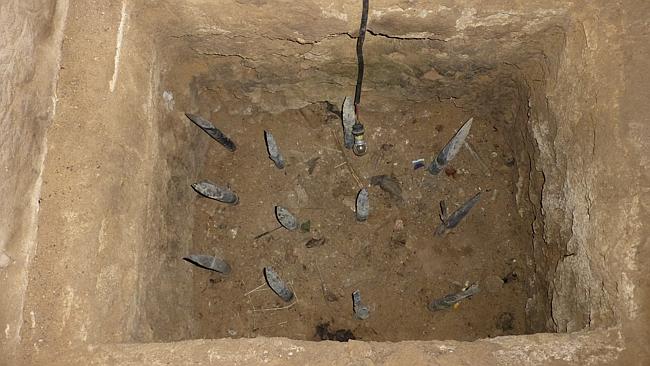Huyh Van Chia was only 17 years old when he began to fight as a guerilla soldier in the Vietnam War. When he turned 21, he lost both an eye and a arm when he was shot by the enemy after shooting at a tank. Chia was operated on in a small room under the ground that was only a few meters wide where surgeries were often performed. There was only a few doctors around at the time, and it was only some times did the doctors have anesthetic.
Angela Saurine from the Herald Sun met a 69-year old Chia at Cu Chi, where a 200km network of tunnels was built for soldiers and villagers to hide during an APT tour. The veteran recalls of when people would stay underground for up to 26 days at a time and numerous babies were born underground. Children as young as 10 years old were used to send messages during the war because it was too dangerous for the people to communicate by radio. People would also send messages through bird or animal calls.
Ammunition was difficult to find, Chia says the soldiers often took unexploded bombs home and create landmines.

Many of the landmines remained undetonated long after the war ended, injuring people who happened to wander in their path. The US helped a major effort to clear out as many of these explosive as possible between 1976 and 1978. Chia now lives off of a pension from the government, but he says it is a very small stipend compared to what Australian veterans receive. The tour group Saurine was a part of included several soldiers from Australia and the US, one of whom took a photo with Chia.
The tunnels at Cu Chi were originally built by the villagers to hide from the French in 1947. The tunnels expanded during the civil war between the communist north and the south. The tunnels connected homes and then eventually villages. During the peak of the Vietnam War during the 60s and 70s, 12,000 people were hiding underground.

American soldiers were trained to fight in the tunnels in their efforts to help prevent the Viet Cong from entering Saigon from Cambodia. The film, Tunnel Rats, was based on their experiences. The construction of the tunnels and their designs are quite ingenious. Small mounds that look like termite hills act as a camouflage to cover air vents. Bamboo pipes that were up to 12 meters long would run underneath and bring in oxygen into the tunnels. The tunnels stretched several levels with functioning rooms.
Saurine shares about her experience, stating:
“We descend the stairways and crouch low to explore two tunnels – one 15m long – to see two rooms.
One was once a surgery, similar to the one Chia had his operation in; the other is a surprisingly large room that was used for meetings. I can’t help squealing while making my way through one tunnel when a small bat flies towards me. We also see a military workshop where weapons were made. The tunnel entrances were camouflaged by jungle vegetation placed on top.
A guide points out one small, square entrance hidden beneath foliage which we would otherwise never have noticed. A staff member dressed in military uniform squeezes into the tunnel, pulls the door over the top and disappears. Minutes later he pops up a few metres behind us from another secret door. There are also B52 bombs and cluster bombs on display, and we walk past a large bomb crater. Also on display are sandals made out of old car tyres that soldiers would wear backwards to confuse the enemy who may be following their footprints. Perhaps the most confronting part of the tour is seeing the evil traps devised during the conflict.
Some were holes in the ground with trap doors that had sharp bamboo sticks pointing up with snake venom on the tips. They were often filled with human waste, centipedes and deadly cobras. It all makes me very glad I wasn’t in Vietnam at the time.”
